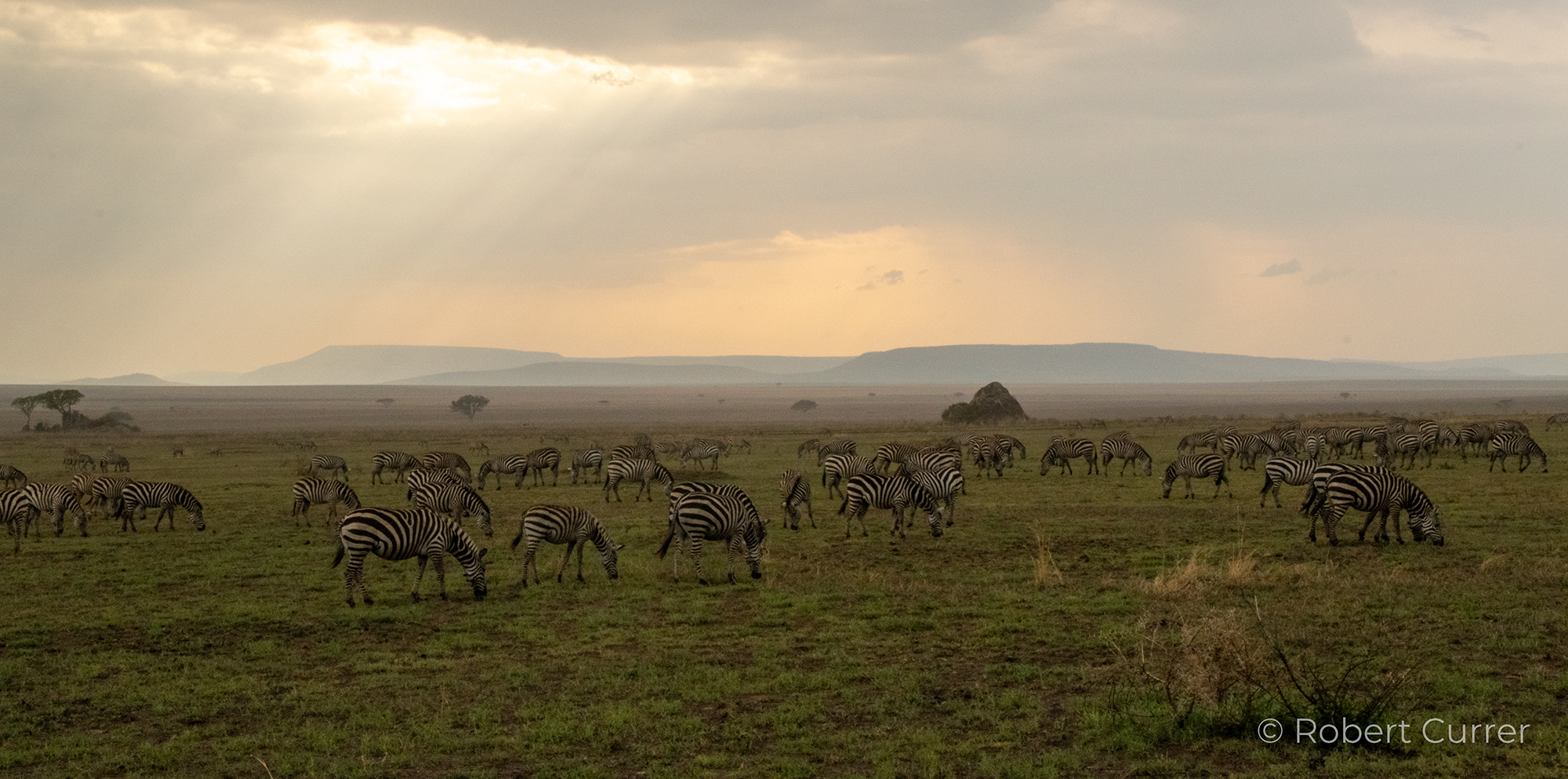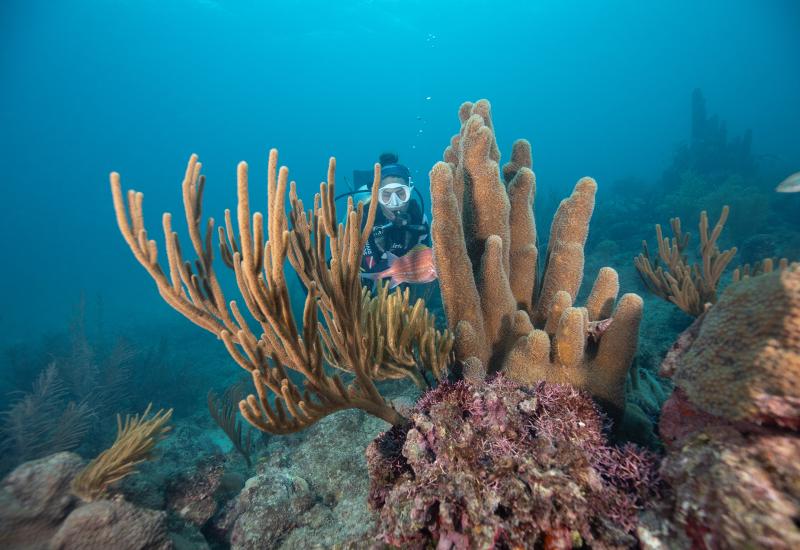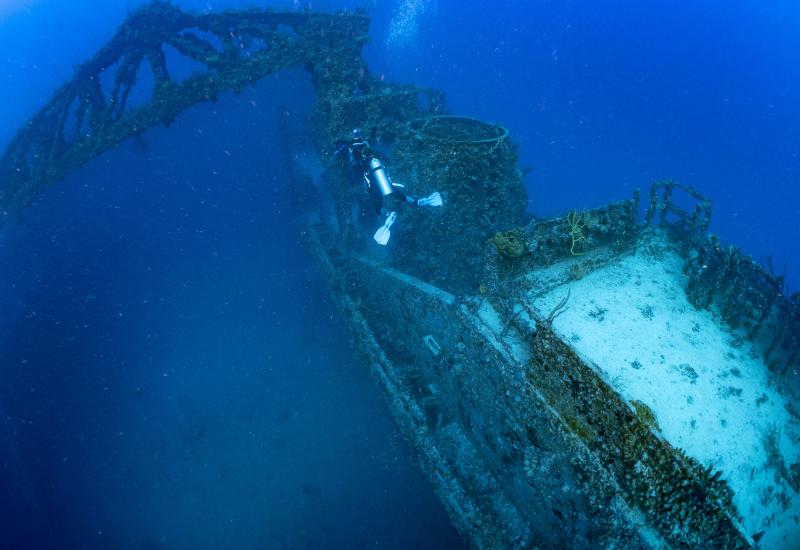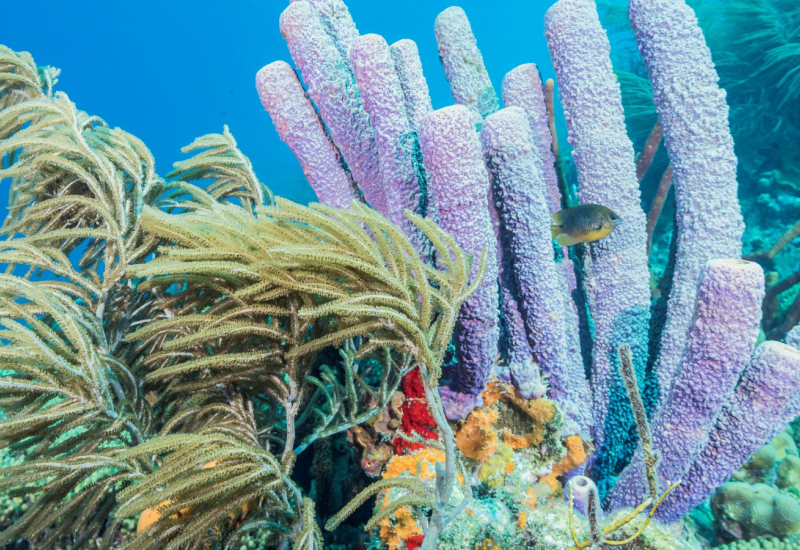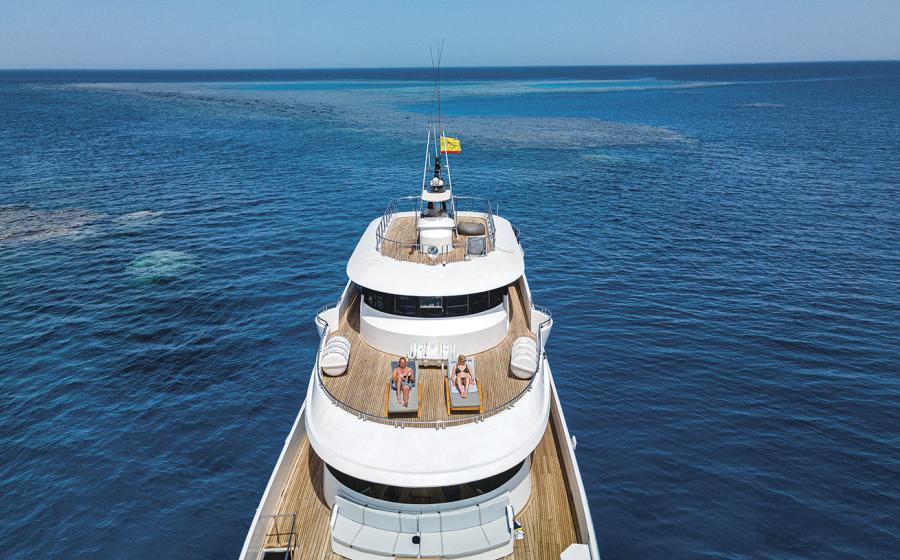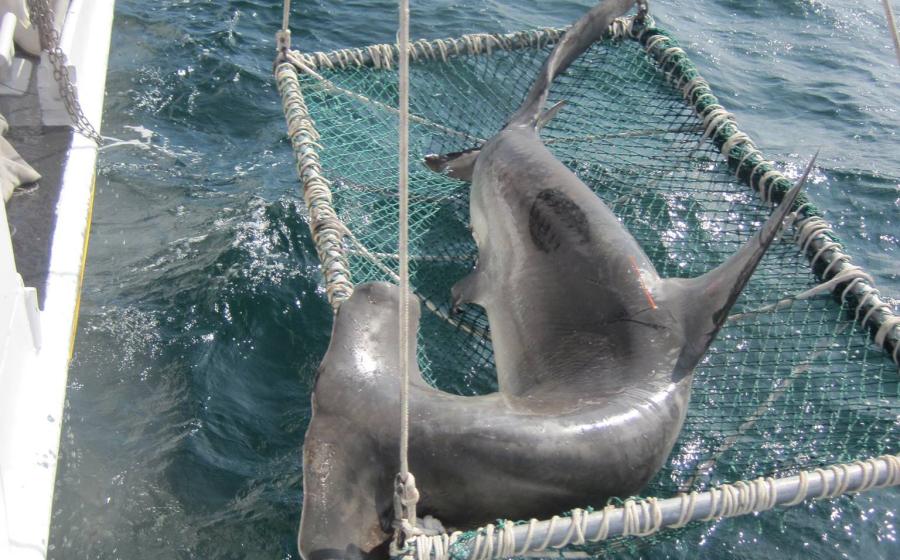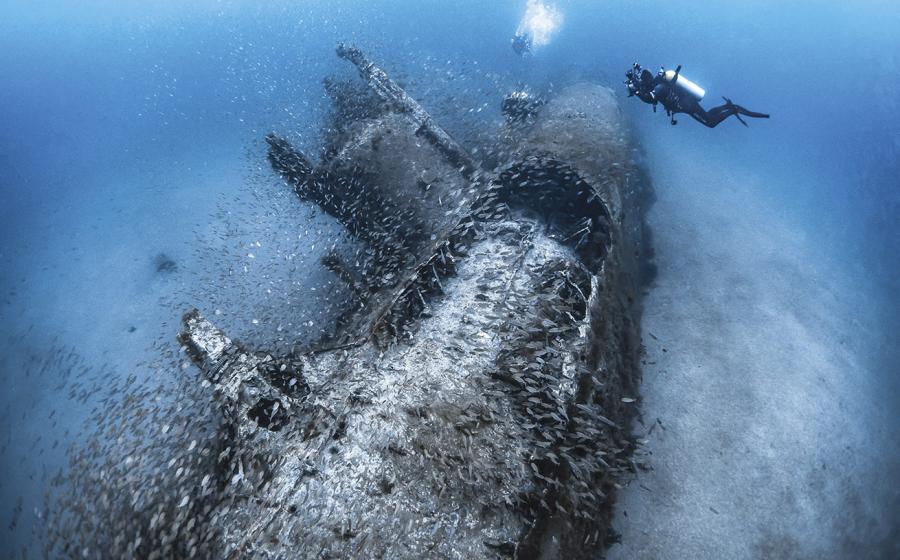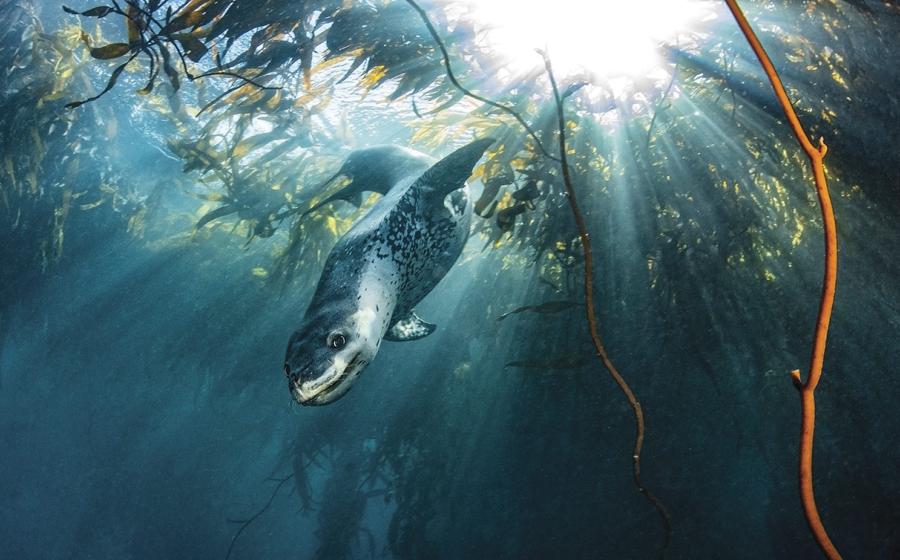Exploring Land and Sea in a Double-Dip African Dive Trip
Our safari car, a mighty pachyderm of an automobile, gallops down a thin vein of asphalt. We are flanked by buzzing markets and neon-painted cinderblock buildings. But as the markets dwindle, the road fades to ruddy, packed earth leading deeper into the wilderness.
The wind changes, and the ghosts of diesel and fried oil vanish. My nostrils fill with the perfume of saccharine flowers and petrichor. In a rush, I’m a younger man again, teaching in a school on the other side of the African continent off a road not dissimilar to this. I’m overcome. The vitality of Tanzania washes over me in a delicious wave. It feels like coming home.
Safari in Tanzania
Tarangire National Park, my home for two nights, is an enormous swath of wilderness dappled with acacia and baobab trees. It flows into a marshy basin to cradle the languid yawn of the Tarangire river. Indeed, it feels as though all the world drains to this place as I drift among heavy herds of zebra and antelope grazing beneath sunning flocks of marabou storks. Even elephants come by the half-dozen to cool themselves with mud and drink.
A couple days spent wandering rugged trails sees us through the mountains and into another world where tall grass stretches out to meet the sky in every direction. Serengeti is a Masai word meaning "endless plain," and never was there a more apt description. Standing amid those rolling waves of amber grass in Serengeti National Park, I feel the kind of insignificance found in the vastness of the open ocean, where land is only a dream.
Here lions reign. These 350-pound felines lounge belly up in the sun or doze in the shade while their cubs suckle and gambol about. We find these royals enjoying their solitude, or in duos and trios, or in prides of more than half a dozen. In Serengeti, it seems, one cannot round a bend without intruding upon a lion.
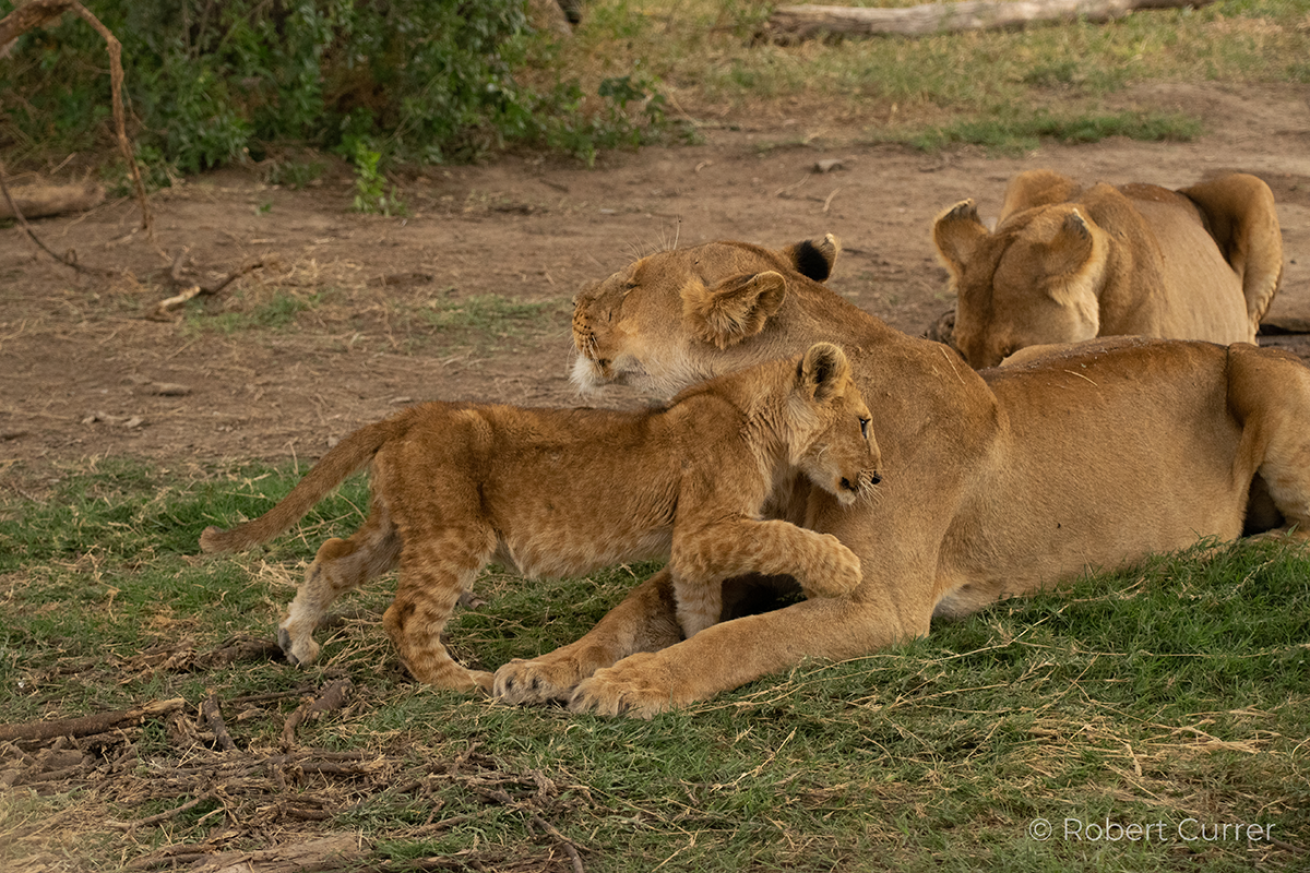
Rob CurrerA lioness tends to her cub in Serengeti National Park.
The journey back takes us through Ngorongoro Crater, an ancient caldera that once saw the very first footsteps of humanity. Today, it’s host to bewildering herds of zebra and ribbons of wildebeest that graze the grasslands surrounding the mudflats of a shallow lake.
Even with five days of wonder top of my mind, the sheer vitality surrounding me quickens my pulse. I spend my lunch at the edge of a hippo pool, watching a pair of males battle for claims to a harem. Their power and ferocity are matched only by the machine gun rattle of my camera shutter.
Near the end of our time, the car stops at the edge of a grassy stretch dotted with striped herds. Happyfun, our guide, points beyond the obvious to a line of thick shrubs. With my binoculars, I follow his arm, and seeing what was hidden, I let my jaw clatter to the floor. There, literally poking out, is the horned face of a rhino. If I squealed for joy, my friends were too busy gawking to comment. There are only 26 of these imperiled creatures left in Ngorongoro. And to stumble upon one in the caldera's vastness in the safari's last hour was nothing short of miraculous. I basked in the glow of that breathless moment for the next three days.
Diving in Zanzibar
A drunken moth of an aircraft carries me to the island of Zanzibar. Once back on solid ground, I take a car north to begin what promises to be a week of relaxing dives.
It’s late afternoon when I settle into my cozy beach-view cottage. Big bay windows make up the seaside wall, offering an unobstructed view of infinite azure. My cabin is one of a line, set a few yards back from a deck that stretched over the rocky escarpment separating dry land from the sea. At this hour, waves still crash upon the rocks, sending jets of spray up between the gaps in the planking. Yet, as twilight falls, the sea recedes into the distance. By moon rise, a bare beach of star-painted silver shines nearly to the horizon.
Diving starts late the following day. The tide keeps its own hours. It came in and out again in the night, barring the boat from the shore. We can’t carry our gear out as the sun’s hot yolk reveals a minefield of sea urchins. Not that I mind. I’m tired from a week of constant roving and relish the casual start.
At last, the tide returns, and we board the wooden dhow that is our dive boat for the week. A short run positions us above the reef. I backroll into warm water, collect my group, and descend onto Shane's Reef. Scattered rock forms a fat vein of life that wriggles along the gentle slope of an otherwise sandy bottom. Layers of hard and soft corals crown the stones with a halo of reef fish, painting a soothing landscape.
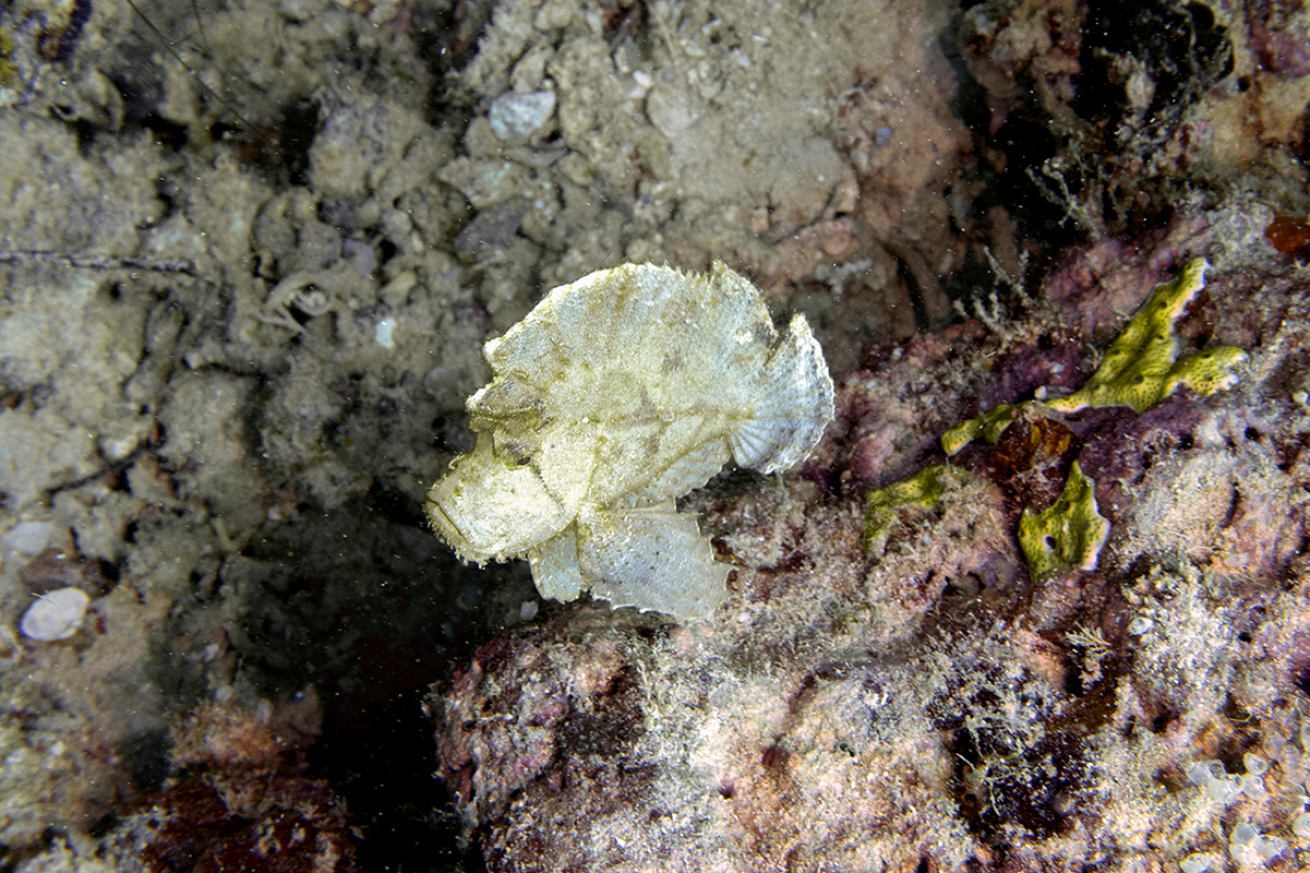
Shutterstock.com/Aleksandra TokarzA leaffish rests on the reefs of Zanzibar.
But the treasure of Zanzibar is outside the obvious. The gems hide in the details. Over the week, I learn to peer among the jungle brush of coral to find the grandeur within. And the rewards are great. I quickly lose count of the nudibranchs and octopi. Mantis shrimp race along the reef with impunity. Scorpionfish and lionfish are as numerous as the lions of Serengeti. And leaffish appear seemingly in every stony divot.
I grow so accustomed to hunting for these tiny treasures that I almost miss more monstrous beauties. Ali, our guide, signs for a frogfish and points to a nook in the rock. I look as closely as I dare but find no sign of the camouflaged creature. It’s only when I give up and back-fin out of the crevice that I take in the whole scene. And I realize the area I searched is the frogfish. It’s very near the size of my head.
But the frogfish of unusual size is only the beginning. Over the subsequent dives, I encounter a seahorse larger than the span of my hand, a healthy-sized cuttlefish, and a prehistoric-looking crocodilefish. I hoard the memories of these singular encounters like beloved jewels, secreting them away in the pages of my logbook.
A week of diving rushes by like a dream. My head is still at sea when I return to Stone Town to await my pre-dawn flight. Two weeks of Tanzanian marvels fill my memories to near bursting. And with a thrill, I realize that I have only just scratched the surface of all the wonders Tanzania has to offer.
Need to Know
Operators
- Safari Operator - Matembezi
- Dive Operator - East Africa Diving
Conditions
The water temperature is in the high 70s to the low 80s all year. And depths rarely exceed 60 feet. But current changes from dive to dive, so it’s recommended to familiarize yourself with drift diving techniques before traveling. Likewise, the visibility changes with the current, ranging from 50 to 90 feet most days.
Getting There
Several major airlines fly into Kilimanjaro International Airport in Arusha and Abeid Amani Karume International in Zanzibar. Whichever airport you use, plan to get your visa on arrival. This is easier and much faster than trying to get it ahead of time. For U.S. citizens, plan to bring a new $100 bill as payment. And everyone should bring a pen. I can't stress this enough. There are no pens at the airports. Seriously, not a one.
When to Visit
Visit year-round. May through September is the busy season. But the off-season can be just as good. My trip was at the beginning of October, and I highly recommend it.
Where to Stay
Work with your Safari operator on this. Lodging will vary depending on your itinerary, and they have relationships with lodges around the parks. For diving, Mnarani Beach Cottages struck an excellent balance between amenities and price. And they are only a short distance from the dive center.

